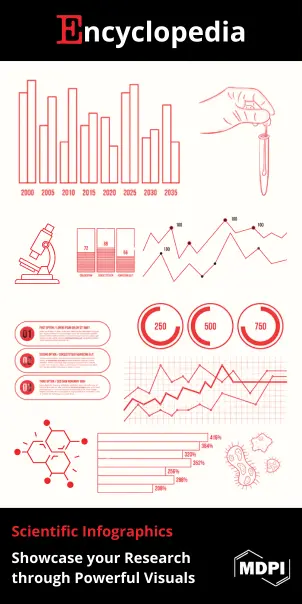
Video Upload Options
The Huntington–Hill method of apportionment assigns seats by finding a modified divisor D such that each constituency's priority quotient (its population divided by D), using the geometric mean of the lower and upper quota for the divisor, yields the correct number of seats that minimizes the percentage differences in the size of subconstituencies. When envisioned as a proportional electoral system, it is effectively a highest averages method of party-list proportional representation in which the divisors are given by [math]\displaystyle{ \scriptstyle D=\sqrt{n(n+1)} }[/math], n being the number of seats a state or party is currently allocated in the apportionment process (the lower quota) and n+1 is the number of seats the state or party would have if it is assigned to the party list (the upper quota). Although no legislature uses this method of apportionment to assign seats to parties after an election, it was considered for House of Lords elections under the ill-fated House of Lords Reform Bill. The method is how the United States House of Representatives assigns the number of representative seats to each state – the purpose for which it was devised – and the Census Bureau calls it the method of equal proportions. It is credited to Edward Vermilye Huntington and Joseph Adna Hill.
1. Allocation
In a legislative election under the Huntington–Hill method, after the votes have been tallied, the qualification value would be calculated. This step is necessary because in an election, unlike in a legislative apportionment, not all parties are always guaranteed at least one seat. If the legislature concerned has no exclusion threshold, the qualification value could be the Hare quota[1], or
- [math]\displaystyle{ \frac{\mbox{total} \; \mbox{votes}}{\mbox{total} \; \mbox{seats}} }[/math],
where
- total votes is the total valid poll; that is, the number of valid (unspoilt) votes cast in an election.
- total seats is the total number of seats to be filled in the election.
In legislatures which use an exclusion threshold, the qualification value would be:
- [math]\displaystyle{ \mbox{exclusion} \; \mbox{threshold} \; \mbox{[percentage]}(\frac{\mbox{total} \; \mbox{votes}}{\mbox{100}}) }[/math].
Every party polling votes equal to or greater than the qualification value would be given an initial number of seats, again varying if whether or not there is a threshold:
In legislatures which do not use an exclusion threshold, the initial number would be 1, but in legislatures which do, the initial number of seats would be:
- [math]\displaystyle{ \mbox{exclusion} \; \mbox{threshold} \; \mbox{[percentage]}(\frac{\mbox{total} \; \mbox{seats}}{\mbox{100}}) }[/math]
with all fractional remainders being rounded up.
In legislatures elected under a mixed-member proportional system, the initial number of seats would be further modified by adding the number of single-member district seats won by the party before any allocation.
Determining the qualification value is not necessary when distributing seats in a legislature among states pursuant to census results, where all states are guaranteed a fixed number of seats, either one (as in the US) or a greater number, which may be uniform (as in Brazil ) or vary between states (as in Canada ).
It can also be skipped if the Huntington-Hill system is used in the nationwide stage of a national remnant system, because the only qualified parties are those which obtained seats at the subnational stage.
After all qualified parties or states received their initial seats, successive quotients are calculated, as in other Highest Averages methods, for each qualified party or state, and seats would be repeatedly allocated to the party or state having the highest quotient until there are no more seats to allocate. The formula of quotients calculated under the Huntington-Hill method is
- [math]\displaystyle{ A_{n} = \frac{V}{\sqrt{s(s+1)}} }[/math]
where:
- V is the population of the state or the total number of votes that party received, and
- s is the number of seats that the state or party has been allocated so far.
1.1. Example
Even though the Huntington–Hill system was designed to distribute seats in a legislature among states pursuant to census results, it can also be used, when putting parties in the place of states and votes in place of population, for the mathematically equivalent task of distributing seats among parties pursuant to an election results in a party-list proportional representation system. A party-list PR system requires large multi-member districts to function effectively.
In this example, 230,000 voters decide the disposition of 8 seats among 4 parties. Unlike the D'Hondt and Sainte-Laguë systems, which allow the allocation of seats by calculating successive quotients right away, the Huntington–Hill system requires each party or state have at least one seat to avoid a division by zero error. In the U.S. House of Representatives, this is ensured by guaranteeing each state at least one seat; in a single-stage PR election under the Huntington–Hill system, however, the first stage would be to calculate which parties are eligible for an initial seat.
This could be done by excluding any parties which polled less than the Hare quota, and giving every party which polled at least the Hare quota one seat.[1] The Hare quota is calculated by dividing the number of votes cast (230,000) by the number of seats (8), which in this case gives a qualification value of 28,750 votes.
| Denominator | Votes | Is the party eligible or disqualified? |
|---|---|---|
| Party A | 100,000 | Eligible |
| Party B | 80,000 | Eligible |
| Party C | 30,000 | Eligible |
| Threshold | 28,750 | |
| Party D | 20,000 | Disqualified |
Each eligible party is assigned one seat. With all the initial seats assigned, the remaining five seats are distributed by a priority number calculated as follows. Each eligible party's (Parties A, B, and C) total votes is divided by 1.41 (the square root of the product of 1, the number of seats currently assigned, and 2, the number of seats that would next be assigned), then by 2.45, 3.46, 4.47, 5.48, 6.48, 7.48, and 8.49. The 5 highest entries, marked with asterisks, range from 70,711 down to 28,868. For each, the corresponding party gets another seat.
For comparison, the "Proportionate seats" column shows the exact fractional numbers of seats due, calculated in proportion to the number of votes received (For example, 100,000/230,000 × 8 = 3.48). If the "Total Seats" column is less than the "Proportionate seats" column (Parties C[2] and D in this example) the party is under-represented. Conversely, if the "Total Seats" column is greater than the "Proportionate seats" column (Parties A and B in this example) the party is over-represented.[3]
| Denominator | 1.41 | 2.45 | 3.46 | 4.47 | 5.48 | 6.48 | 7.48 | 8.49 | Initial seats |
Seats won (*) |
Total Seats |
Proportionate seats[4] |
|---|---|---|---|---|---|---|---|---|---|---|---|---|
| Party A | 70,711* | 40,825* | 28,868* | 22,361 | 18,257 | 15,430 | 13,363 | 11,785 | 1 | 3 | 4 | 3.5 |
| Party B | 56,569* | 32,660* | 23,094 | 17,889 | 14,606 | 12,344 | 10,690 | 9,428 | 1 | 2 | 3 | 2.8 |
| Party C | 21,213 | 12,247 | 8,660 | 6,708 | 5,477 | 4,629 | 4,009 | 3,536 | 1 | 0 | 1 | 1.0 |
| Party D | Disqualified | 0 | 0.7 | |||||||||
If the number of seats was equal in size to the number of votes cast, this method would guarantee that the apportionments would equal the vote shares of each party.
In this example, the results of the apportionment is identical to one under the D'Hondt system. However, as the District magnitude increases, differences emerge: all 120 members of the Knesset, Israel's unicameral legislature, are elected under the D'Hondt method[5]. Had the Huntington–Hill method, rather than the D'Hondt method, been used to apportion seats following the elections to the 20th Knesset, held in 2015, the 120 seats in the 20th Knesset would have been apportioned as follows:
| Party | Votes | Huntington–Hill | D'Hondt[5] | +/– | |||
|---|---|---|---|---|---|---|---|
| (hypothetical) | (actual) | ||||||
| Last Priority[6] | Next Priority[7] | Seats | Seats | ||||
| width=2px bgcolor="Template:Likud/meta/color" | | Likud | 985,408 | 33408 | 32313 | 30 | 30 | 0 |
| Zionist Union | 786,313 | 33468 | 32101 | 24 | 24 | 0 | |
| width=2px bgcolor="Template:Joint List/meta/color"| | Joint List | 446,583 | 35755 | 33103 | 13 | 13 | 0 |
| bgcolor="Template:Yesh Atid/meta/color" | | Yesh Atid | 371,602 | 35431 | 32344 | 11 | 11 | 0 |
| bgcolor="Template:Kulanu/meta/color" | | Kulanu | 315,360 | 37166 | 33242 | 9 | 10 | –1 |
| bgcolor="Template:The Jewish Home/meta/color" | | The Jewish Home | 283,910 | 33459 | 29927 | 9 | 8 | +1 |
| bgcolor="Template:Shas/meta/color" | | Shas | 241,613 | 37282 | 32287 | 7 | 7 | 0 |
| bgcolor="Template:Yisrael Beiteinu/meta/color" | | Yisrael Beiteinu | 214,906 | 39236 | 33161 | 6 | 6 | 0 |
| bgcolor="Template:United Torah Judaism/meta/color" | | United Torah Judaism | 210,143 | 38367 | 32426 | 6 | 6 | 0 |
| bgcolor="Template:Meretz/meta/color" | | Meretz | 165,529 | 37013 | 30221 | 5 | 5 | 0 |
| Source: CEC | |||||||
Compared with the actual apportionment, Kulanu would have lost one seat, while The Jewish Home would have gained one seat.
References
- Other quotas could be used instead, such as the Droop quota.
- Party C's proportion is actually 1.04
- While this example favors the largest parties (Parties A and B), if a different number of seats were apportioned, other parties would be favored. In short, the largest party is not always favored.For example, if there were 12 seats instead of 8, then Party C would be the only over-represented party (since Party D would have qualified) with two full seats while proportionately deserving only 1.6 seats.
- This proportionality is based on the total votes. If instead it was based on the qualified votes (i.e., reducing the total 230,000 votes by the disqualified 20,000 votes for Party D), the proportionate seats would be: Party A - 3.8 seats, Party B - 3.0 seats, and Party C - 1.1 seats.
- The method used for the 20th Knesset was actually a modified D'Hondt, called the Bader-Ofer method. This modification allows for spare vote agreements between parties.
- This is each party's last priority number which resulted in a seat being gained by the party. Likud gained the last seat (the 120th seat allocated). Each priority number in this column is greater than any priority number in the Next Priority column.
- This is each party's next priority number which would result in a seat being gained by the party. Kulanu would have gained the next seat (if there were 121 seats in the Knesset). Each priority number in this column is less than any priority number in the Last Priority column.




